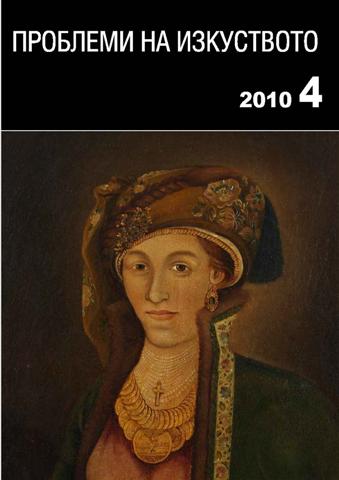Гръцката фамилия константину и художествените процеси в самоковската митрополия през първата половина на ХІХ век
The Greek Family Konstantinou and the Art Processes in the Samokov Bishopry during the First Half of the 19th century
Author(s): Emmanuel MoutafovSubject(s): Fine Arts / Performing Arts
Published by: Институт за изследване на изкуствата, Българска академия на науките
Summary/Abstract: In this article E. Moutafov continues his research on Greek-Bulgarian art connections during the Post- Byzantine period. Here he suggests that the icon-painter Kyriazis Konstantinou, who depicted with wall-paintings in 1837 the church in Rayovo village, Samokov region, and the author of the first hermeneia in Bulgarian (1831) – Ioannes Konstantionou – are heirs of priest Konstantinos from Korytiani village, near Ioannina. Most probably Ioannes is Kyriazis’ father, who after learning the art of religious painting and became a priest, settled in Samokov as an clerk in the Metropolis there replacing Neophytos of Rila. Both Greeks from Iannina region practiced quacking, which encouraged Kyriazis to sign his works from 1860 in the church of Kipoi village, region of Ioannina, as “doctor in Samokov”. The author approves that the copied and translated by Ioannes Konstantinou hermeneia was used by Zachari Petrovich as a prototype for his treatise on painting, which was published by A. vassiliev in 1976. Moutafov thinks that the above mentioned hermeneia’ s protograph was gained from Io- annes during his work in Preveza close to Ionian islands, because the manuscript contents a lot of passages from the Panagiotes Dox- aras’ translations of Leonardo’s. „Trattato della Pitura” and other Renaissance masters. Translating it into Bulgarian this codex contributes i.e. with the recipes for oil painting to the Europeanisation of the local art school. That is why this manuscript was being found to the hands of Nikola Obrazopisov, who stand-up at the break of day of Bulgarian secular art. The presence of both Greek masters in Samokov in the middle of the 19th century, on the other hand, shows the attractiveness of the city as an art, religious and trade center. Ioannes and his son changed their family name to Konstantinovich in Samokov, which makes Moutafov to define for the first time this phenomenon with the term diplonymia (διπλονυμία).
Journal: Проблеми на изкуството
- Issue Year: 2010
- Issue No: 4
- Page Range: 36-39
- Page Count: 4
- Language: Bulgarian
- Content File-PDF

